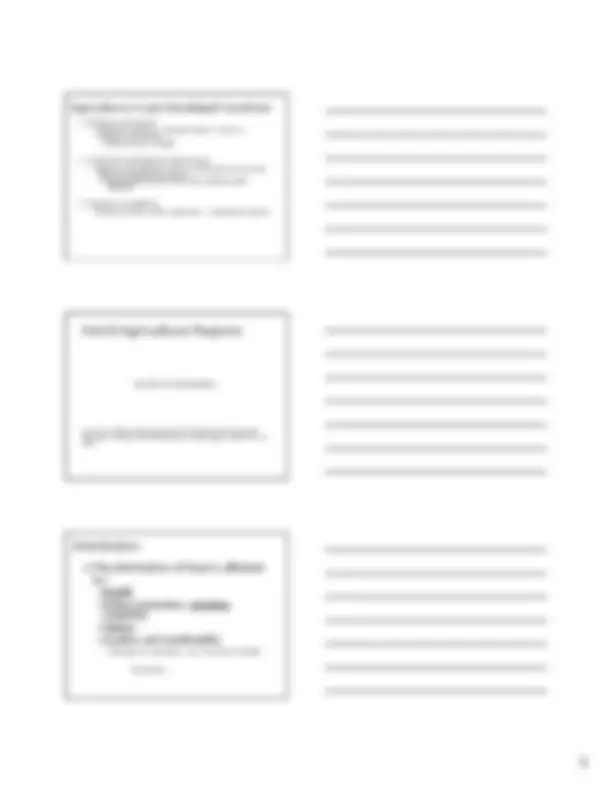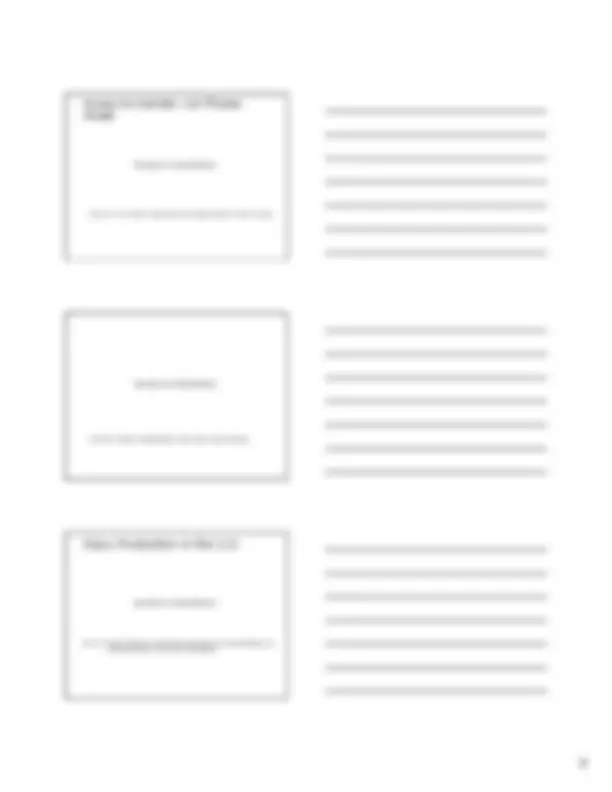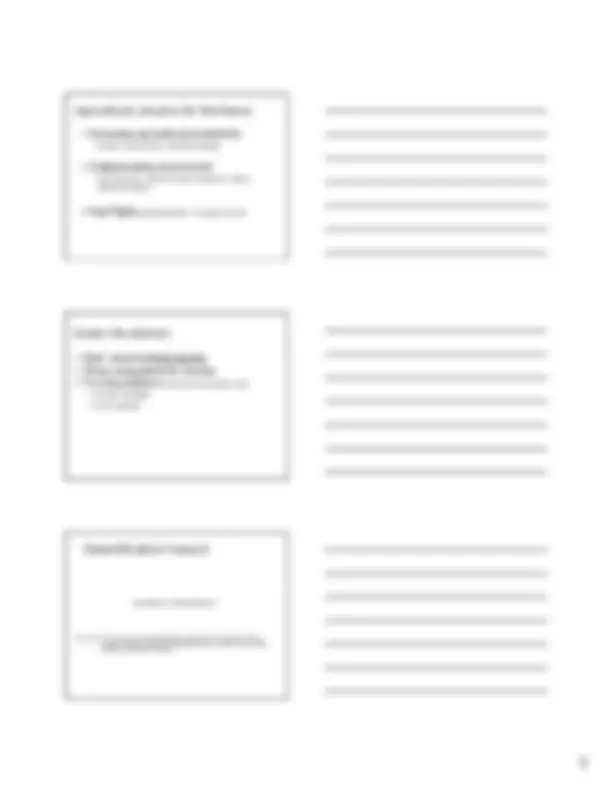





Study with the several resources on Docsity

Earn points by helping other students or get them with a premium plan


Prepare for your exams
Study with the several resources on Docsity

Earn points to download
Earn points by helping other students or get them with a premium plan
Community
Ask the community for help and clear up your study doubts
Discover the best universities in your country according to Docsity users
Free resources
Download our free guides on studying techniques, anxiety management strategies, and thesis advice from Docsity tutors
An overview of the origins of agriculture, the different types of agriculture, and future concerns in the field. It covers topics such as the development of agriculture from hunter-gatherer societies to industrial agriculture, the role of agricultural hearths in vegetative planting and seed agriculture, and the impact of wealth, politics, culture, and location on food distribution. The document also discusses access to markets and the role of von thunen's model, as well as agricultural concerns for the future, including increasing productivity through the green revolution and biotechnology, and the deteriorating environment and food fights caused by globalization.
Typology: Study notes
1 / 6

This page cannot be seen from the preview
Don't miss anything!




Geog 205 Spring 2009
Fig 10-13: Von Thunen model of role of situation factors in choice of crop. See Figure in Class/Textbook. Fig 10-8: Location, transferability, and income in dairy farming... See Figure in Class/Textbook.
Fig. 10-9: Milk production is widely dispersed because of its perishability, but cheese production is far more concentrated. See Figure in Class/Textbook.
Fig. 10-14: The most severe desertification hazards are in northern Africa, central Australia, and the southwestern parts of Africa, Asia, North America, and South America. See Figure in Class/Textbook.